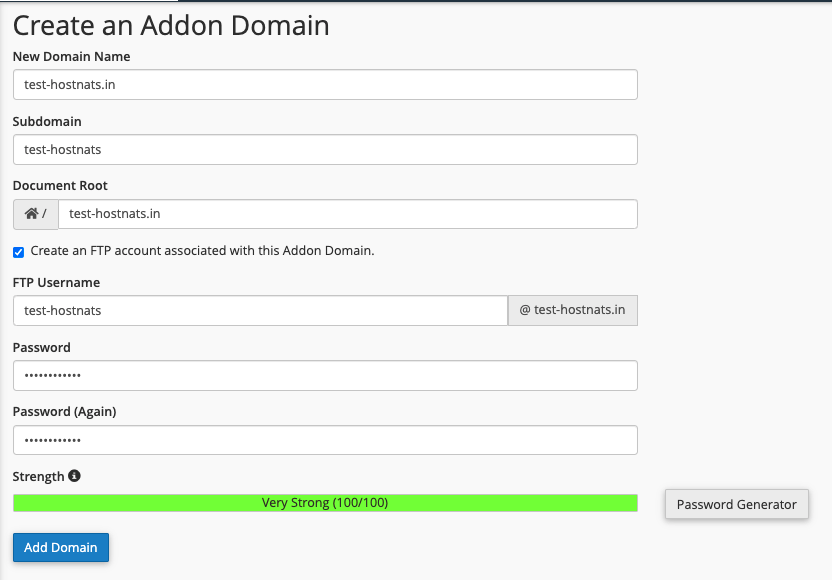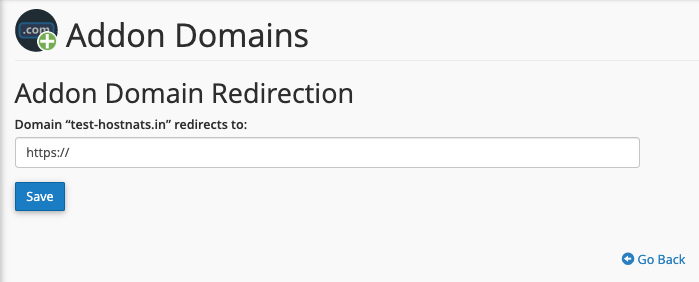Additional domains stored as a subdomain of your main site are known as add-on domains. Using the Addon Domains feature in cPanel, you can easily build and manage multiple domains with a single account. Let’s get this discussion started.
Accessing Addon Domains Tool
Check for and open Addon Domains from your main dashboard.

Creating an Addon Domain
After you’ve opened the tool, you’ll need to complete the form. Here’s how each area is explained:
- New Domain Name — You just need to type in the domain name you want to add. We’re using test-hostnats.in in this situation.
- Subdomain — The subdomain name will be added automatically by cPanel. If you’re just going to add one domain, leave it alone. Otherwise, you’ll need to change it if you want to add two domains with the same name but separate TLDs, such as samedomainname.com and samedomainname.net.
- Document Root — It will also fill itself automatically. This is the location of the content for your addon domain.
- Create an FTP Account (Optional) — You may use this method to build a new FTP account for the new addon domain. You don’t need to build a domain if you’re going to handle it yourself. You should, however, check the Create an FTP account associated with this Addon Domain box if you want to set up the addon domain for someone else. They will only be able to access the files of that particular addon domain if they have their own account.
Once you’ve filled that, click the Add Domain button.

Now that the addon domain has been successfully created, you can begin uploading the website’s files to the newly created subfolder in your cPanel account’s File Manager.
Manage the Addon Domains
The domain should appear in the Modify Addon Domain list once it’s been added. The following is the section’s description:

- Addon Domains — Here you can see all of the domains you’ve added.
- Document Root — that particular domain’s folder path The link will take you to the File Manager when you click it.
- Subdomain — a name produced automatically in the form
- Redirects to — You can use the same function as Aliases to redirect the domain to another location. It says not diverted because we aren’t doing that. If you want to do so, simply click the Manage Redirection button, which will open a new window where you can set the redirection course.

- Actions — a way to take the addon domain off the list
You’ve now learned how to use your cPanel account to build and manage addon domains. Using the same username, you can upload files and control the backend for several domains.
